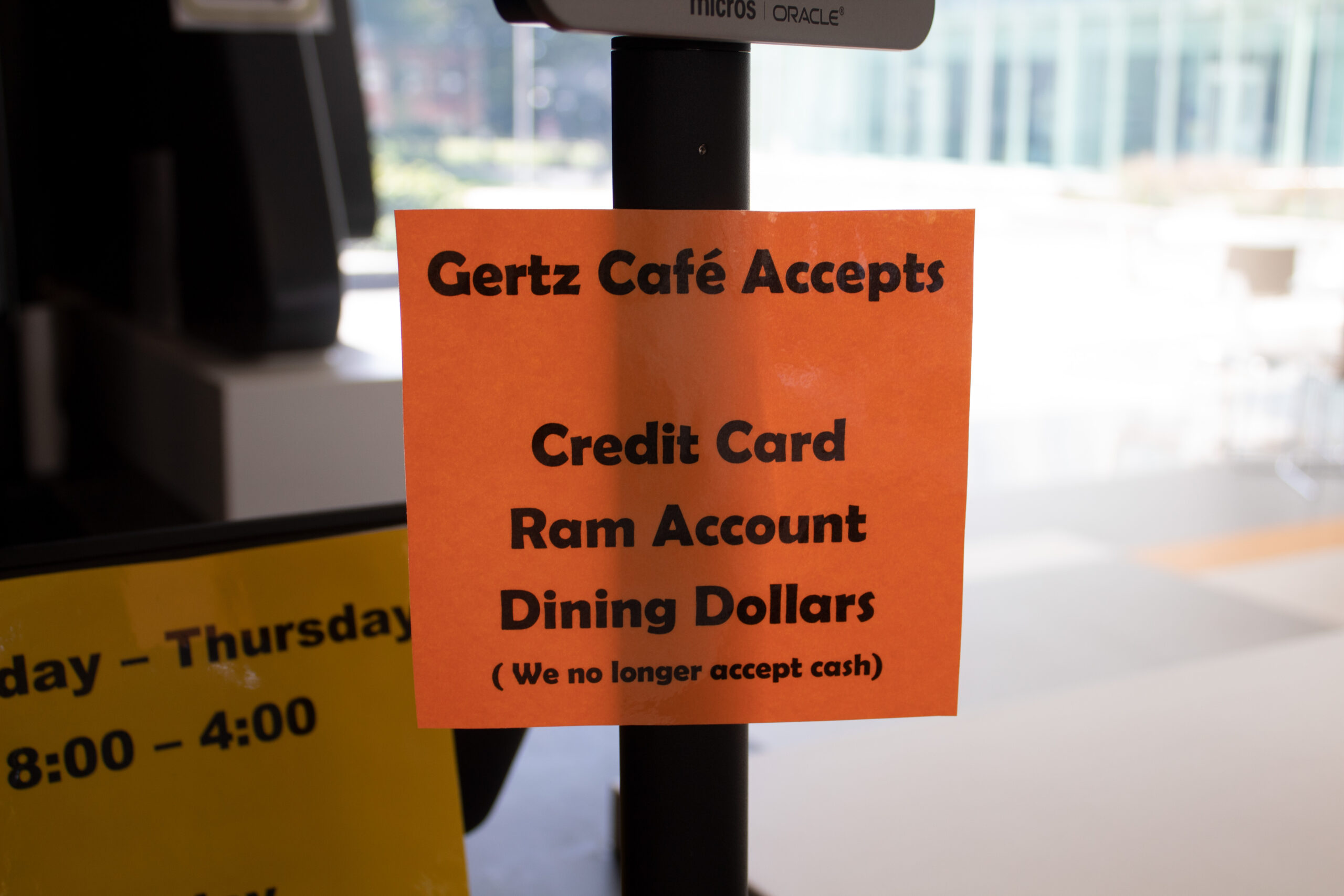A new meal plan has left students confused on how to take advantage of their Ram account and Dining Dollars. PHOTO CREDIT: Hannah Charron | Staff Photographer
Dining Services at the University of Rhode Island implemented new meal-plan arrangements entering the fall 2022 semester, and reviews across campus have been mixed.
Students are still offered two varieties of dining options: Unlimited and Flex Plans. While Unlimited Plans are advertised for on-campus students who require unlimited access to the Mainfare and Butterfield dining halls, Flex Plans gear towards off-campus students, who tend to eat less on the Kingston Campus.
In the past, offered with both of these options were grab-and-gos, where students gave up a prepaid “swipe” rather than a monetary payment. The Ram’s Den, Gertz Cafe, Fujisan Sushi, PizzaXpress, Brookside Bistro and many other dining locations across campus accepted grab-and-go swipes in exchange for a student’s meal of choice. A predetermined number of swipes were given each week, depending on which plan a student was subscribed to.
The recent switch kept both dining plan varieties the same in name, yet not in the outcome. Rather than having grab-and-go swipes, students pay for Dining Dollars, where a lump sum of preloaded money is taken from their account based on their meal or dining location.
This new feature mirrors the purpose of a debit card – money is loaded onto the card either at the start of the semester or on a weekly basis, which is then deducted on a purchase-to-purchase basis.
According to Pierre St-Germain, director of URI Dining Services, the switch was necessary after finding out that many grab-and-go swipes were being left unused by students.
“We saw a high level of underuse, or what we call ‘missed meals,’” St-Germain said. “When we see that, it probably means that we’re doing something wrong.”
St-Germain said that offering grab-and-go swipes would “pigeon-hole” students into only being able to eat the offering of that particular day. According to him, an example of this was that students were limited to receiving a breakfast sandwich with one swipe, while an entirely separate swipe would be needed for a snack later in the day.
Third-year student Katie Bailey experienced both grab-and-gos and Dining Dollars. She said that while the new option has been beneficial in some ways, it has also been complicated to understand.
“I like how you can use the Dining Dollars to get multiple things,” Bailey said. “I don’t really understand the difference or why we needed to switch, though.”
According to St-Germain, Dining Dollars take less money from the students’ pockets, leading to slighter financial waste when purchasing food on campus. He said that this was one of the leading reasons why Dining Dollars were introduced.
“On the complete plan, you’re paying about 25 cents for every dining dollar that you have available,” St-Germain said. “When it comes to flex plans, those tend to be closer to one-to-one. The idea is that you’re getting at least a small discount.”
Third-year student Seth Ohlemacher did not purchase a dining plan this year. He said that he had less financial “freedom” if he were to load Dining Dollars into his account.
“I just don’t see the point in buying a meal plan,” he said. “I’d rather just not have Dining Dollars locked into an account when I could use my debit card instead.”
According to St-Germain, using Dining Dollars gives students some level of advantage since their funds for on-campus dining are separated from the money students spend on grocery shopping or ordering take-out.
He said that keeping this money separate will help students keep track of their expenditures.
“[Dining Dollars] allow for a more holistic approach to what students are buying,” St-Germain said.
He still bears in mind that there has been a price increase for food across the nation. He said that, with the current inflation, food alone has increased by approximately 14%.
Dining Services, according to St-Germain, function on a net zero basis, meaning they do not profit off of meal plan sales. Instead, he hopes to keep prices reasonable for students while still covering the costs of feeding URI.
“We’ve been trying to keep our prices reasonable,” St-Germain said. “If you dine on campus, you should always dine for a lesser amount than off campus. We need to function, but also ensure an advantage for the community.”
To learn more about meal plan options at URI, visit the Dining Services website.





